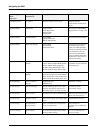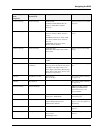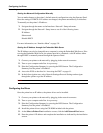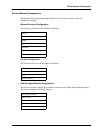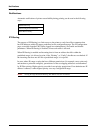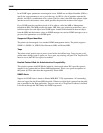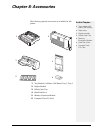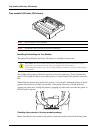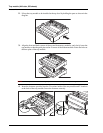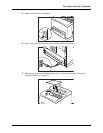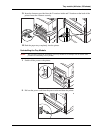
7-6 User’s Guide
SNMP
Networking
In an SNMP agent, parameters are arranged in a tree. SNMP uses an Object Identifier (OID) to
specify the exact parameter to set or get in the tree. An OID is a list of numbers separated by
periods. An OID is a combination of two values. The first value is the OID of the generic object
and the second is the instance value, which specifies the particular instance of the object.
Every SNMP agent has an address book of all its objects, called the MIB or Management
Information Base. The MIB provides the name, OID, data type, read/write permissions, and a
brief description for each object in an SNMP agent. Armed with information about an object
from the MIB, and the instance value, an SNMP manager can send an SNMP message to set or
get one of the parameters on an SNMP agent.
Supported Object Identifiers
The printer can be managed via a standard SNMP management station. The printer supports
SNMP-v1, SNMP-v2c, MIB-II, Host Resources MIB, and Printer MIB.
Tr a p s
The printer sends generic traps at power up and online and offline traps. Traps are sent on all
printer status changes such as: paper out, cover open, tray missing, and jams. The Trap Host ID
must be set via the EWS for traps to be enabled.
Hewlett Packard Web Jet Administrative Compatibility
This product operates with HP WebJet Admin in a basic mode where WJA provides generic
support for any printer that has Printer MIB implemented. There is no special recognition of
this printer by WJA other than that supported by Printer MIB.
SNMP Alerts
Support for SNMP alerts is based on Printer MIB (RFC 1759) requirements. All outstanding
alerts are logged into the Printer MIB alert table. Whenever critical alert is entered into the table
trap is generated to the Host application. Traps are sent only if Trap Host IP address is defined.
It can be set through the EWS under the SNMP setup menu.



